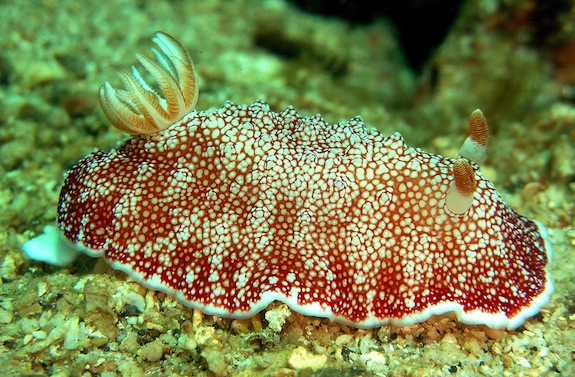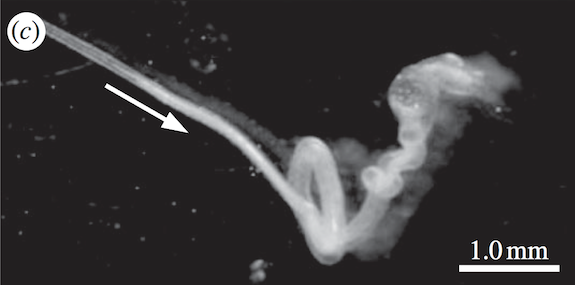This Sea Slug Discards Its Penis After Sex and Grows Another
Chromodoris reticulata, native to the Pacific, engages in mating behavior previously unknown in the rest of the animal kingdom
![]()

Chromodoris reticulata, native to the Pacific, engages in mating behavior unknown in the rest of the animal kingdom. Image via Stephen Childs
Even in the utterly dry language of science, there is no way to describe the mating behavior of the sea slug Chromodoris reticulata as anything other than bizarre. The creature, native to the Pacific Ocean, engages in simultaneous hermaphroditic mating—that is, each slug has both a penis and a vagina, and when mating, both members of a couple inserts their penises into the other’s vagina at the same time—but that’s not nearly the strangest aspect of their reproduction efforts.
As discovered by a group of Japanese scientists and revealed today in the journal Biology Letters, it’s what C. reticulata does after sex that is particularly unexpected—and previously unknown in the animal kingdom. After copulating for about 10 minutes, each slug discards its penis and immediately begins growing a new one, which is ready for use within 24 hours.

Two slugs engaged in simultaneous hermaphroditic mating, each inserting a penis into the other’s vagina (center). Image via Biology Letters, Sekizawa et. al.

The slug’s discarded penis, free-floating after copulation. Image via Biology Letters, Sekizawa et. al.
The research team, led by Ayami Sekizawa of Osaka City University, gathered a number of specimens from coral reefs off of Okinawa and observed their mating behavior in lab tanks. They found that the slugs typically mated for roughly 10 minutes—with each member of a couple assuming both the female and male roles simultaneously—then disengaged, wherein their penises fell off and floated free in the water.
Within roughly 24 hours, the slugs’ penises grew back and they were able to mate once again. If they put a slug in a tank with another before that period had elapsed, it either served just a female role during copulation or avoided mating entirely.
With a full day for regeneration, though, their mating behavior was entirely regular. One particularly vigorous specimen was even able to grow its penis back twice in a row, mating 3 times consecutively with 24 hours between each instance.
The physiology that allows the slug to achieve this feat is fascinating in itself. The researchers observed that the animal’s vas deferens—the coiled internal duct that transports sperm outward—serves as a sort of “next penis” (their phrasing), extending out of the body to replace the old discarded penis.
Why would an organism go to the trouble of regenerating a new penis each time it mates? The scientists speculate that the strange behavior could be an evolutionary response to competition among mates.
The tips of the slugs’ penises, it turns out, are covered with microscopic barbs that were observed to be coated with sperm after mating. This might not be the particular slug’s sperm, the researchers theorize, but a competitor’s—and the barbs might exist to remove sperm deposited by previous slugs in their mates’ vaginas, thereby increasing the chance that it’s their sperm that leads to reproduction. Afterwards, instead of retaining a penis covered in a competitor’s sperm, it’s simpler to discard it and grow a new one.
So no matter how difficult your romantic trials and tribulations, it’s worth remembering: We still have it quite a bit easier than C. reticulata.
/https://tf-cmsv2-smithsonianmag-media.s3.amazonaws.com/accounts/headshot/joseph-stromberg-240.jpg)
/https://tf-cmsv2-smithsonianmag-media.s3.amazonaws.com/accounts/headshot/joseph-stromberg-240.jpg)